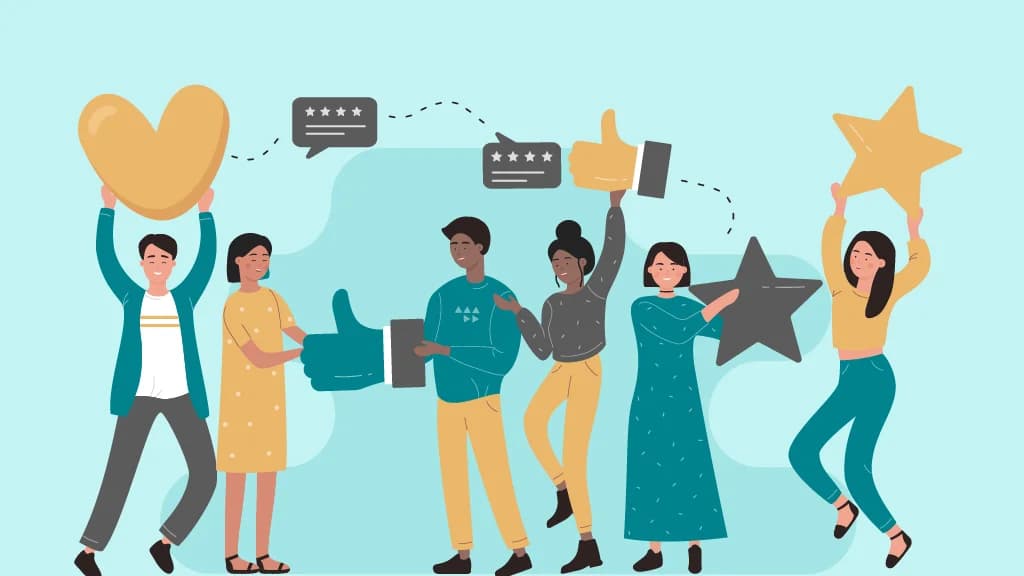Organizational Culture and Employee Engagement: The Key to Building a Thriving Workforce

Team AdvantageClub.ai
March 28, 2025

Have you ever wondered why certain offices are energizing and others dull?
It’s because of the dynamic between organizational culture and employee engagement. A thriving work environment isn’t built on benefits and perks; it’s shaped by a culture that includes employees feeling valued, motivated and appreciated. And when culture and engagement intersect, magic happens!
Platforms like AdvantageClub.ai take this one step further, transforming how companies create rewards, recognition, and incentives. Because let’s be honest, everyone loves to be appreciated!
What is Organizational Culture?
Organizational culture is like a company’s personality; it motivates the manner in which people work, communicate, and view the workplace. It’s not just about policies or office perks; the values, beliefs, and behaviors define the employee experience.
Here’s what makes up organizational culture:
1. Tangible Aspects
- Work Environment: This refers to the physical place where employees spend the day. A nicely laid-out office (or home office) can significantly improve productivity and mood.
- Policies and Practices are the formal rules that dictate how the work gets done and how the employees are treated. Transparent, fair policies foster trust and predictability.
2. Intangible Aspects
- Values and Beliefs: These guiding principles drive decisions, from hiring to management style.
- Emotional Climate dictates the general mood of the workplace, whether it is positive and motivational or strained and formal. Leadership plays a big role in setting the tone.
- Rituals and Traditions: Team lunches, annual celebrations, or office jokes are a few of the impactful things that unite people and make them feel at home.
The Impact of Organizational Culture on Employee Engagement
Employee motivation and organizational culture go hand in hand. When valued and motivated, employees are more committed and dedicated to work.
1. Fostering Trust
Transparent and equitable workplaces build trust, and teamwork and innovation flourish. High employee engagement and organizational culture begin with trust.
2. Creating a Sense of Belonging
Open communications and inclusiveness make them feel valued, increasing engagement and reducing turnover. Organizational culture’s impact on employee engagement is most potent when employees feel like they belong to a team.
3. Driving Motivation
Valuing effort and offering opportunities for development keeps employees engaged. Aligning personal and company goals strengthens organizational culture and employee engagement.
Key Components of an Engaging Company Culture
Thriving organizational culture and staff engagement are based on certain decisive factors. The factors are as follows:
- Clear Mission, Vision, and Values: The employees should be informed about the "why" of what they are doing. The proper mission and values give them direction and sense, increasing the connection between organizational culture and staff engagement.
- Open Communication & Feedback: Two-way communication ensures employees are heard and informed. Regular town halls, surveys, and check-ins create a work culture where feedback creates actual change.
- Growth & Development Opportunities: Employees are engaged when motivated to grow. Training, mentorship, and career development make them feel valued and invested. Organizational culture has the greatest impact on employee engagement when learning is at the top of the mind.
- Recognition & Rewards: Appreciation does go a long way! Valuing effort with genuine rewards via platforms such as AdvantageClub.ai increases morale and motivation.
- Inclusivity & Equity: An inclusive and equity-valuing organization fosters a sense of belonging. When employees feel included, organizational culture and employee engagement automatically improve.
How to Engage Employees in Company Culture
Maintaining employee interest in company culture is an ongoing process, not something that happens once. Here is the recipe for success:
- Employee Involvement: Employees are more engaged when they feel heard. Employee involvement in decision-making and cultural activities makes them feel part of the organization and committed to it.
- Employee Involvement: Employees are more engaged when they feel heard. Employee involvement in decision-making and cultural activities makes them feel part of the organization and committed to it.
- Team-Building Activities: The more substantial the teams, the stronger the cultures. Developing bonding activities makes work more enjoyable, interdependent, and more of a community.
- Consistent Communication: Culture is not a single speech; it's a dialogue. Periodic reminders of the mission, values, and goals keep employees in line, active and engaged.
- Onboarding & Training: First impressions are lasting! A good onboarding process familiarises new employees with the culture from the beginning. Ongoing training embeds those values and keeps them fresh.
Benefits of Aligning Organizational Culture with Employee Engagement
When organizational culture and employee engagement are combined, the paybacks are revolutionary:
- Increased Productivity & Performance: Employees engage each day at their best performance level. They think smarter, work more collaboratively, and create tangible results.
- Higher Job Satisfaction & Retention: Staff sustains when they feel valued. An exceptional culture makes staff loyal, limiting turnover and avoiding recruitment costs.
- Deeper Brand & Customer Loyalty: A positive workplace culture is good for employees and also reflects on customers. Engaged employees create superior customer experiences, which strengthens brand reputation.
- Increased Innovation & Flexibility: An inspired workforce is an innovative workforce. If employees are invested in the company's mission, they will be more likely to experiment with new ideas and innovate to improve.
Challenges in Building and Sustaining an Engaging Culture
Developing an effective employee engagement and organizational culture plan isn’t always a piece of cake. Here are the common challenges:
- Resistance to Change & Leadership Misalignment: Not everybody enjoys change. If leadership isn't completely aligned on cultural values, it becomes more challenging to execute significant engagement plans.
- Working with Cultural Differences in Diverse Teams: Diversity introduces new ideas and calls for sensitivity. Knowing and embracing different cultural outlooks is the secret to keeping inclusivity alive.
- Maintaining Culture in Remote & Hybrid Work: Distance can erode culture if left unmanaged. Remote teams require deliberate efforts—like virtual meetings, open communication, and robust digital engagement—to remain connected.
Strategies for Strengthening Organizational Culture and Employee Engagement
Building a strong organizational culture and employee engagement is a continuous process. These are some of how companies can do this:
- Review and revise cultural programs regularly: Culture is not static; it changes. Take input from employees and update programs to remain contextual and effective.
- Develop Effective Leaders and Cultural Advocates: Motivated leaders create an organization's tone. Leadership development and empowering cultural champions can drive long-term change.
- Leverage Technology to Foster Collaboration and Rewards: Platforms like AdvantageClub.ai make recognizing and rewarding staff easier and build camaraderie, particularly within hybrid or remote settings.
- Prioritize Mental Health and Work-Life Balance: A culture of well-being assists in building happier, more engaged staff. Prioritize flexible working, mental health support, and well-being boundaries.
Measuring the Impact of Organizational Culture on Engagement
To make organizational culture and employee engagement an everyday reality, organizations must measure the right indicators and listen to employees’ insights.
- Key Metrics to Monitor: Track Employee Net Promoter Score (NPS), employee retention rate, and productivity to measure the engagement and cultural fit in numbers.
- Surveys and Feedback Mechanisms: Employ frequent pulse surveys, engagement surveys, and anonymous feedback mechanisms to determine employees' feelings.
- Getting Data to Support Ongoing Improvement: Data isn't just for reports; it's a roadmap. Utilize insights to adjust policies, implement improved initiatives, and build a culture where employees feel appreciated and inspired.
The Synergy of Culture and Engagement
The relationship between employee engagement and organizational culture is a game-changer for any company. Trust, belonging, and motivation lead to an engaged workforce, which results in success.
When organizational culture and employee engagement are priorities, companies can establish a prosperous work environment where workers are appreciated and motivated. Platforms like AdvantageClub.ai offer easier access to better rewards, incentives, and recognition, strengthening the connection.
When culture and engagement intersect, workers don’t just work; they thrive. It’s time to leverage this synergy and build workplaces that unlock everyone’s potential.





